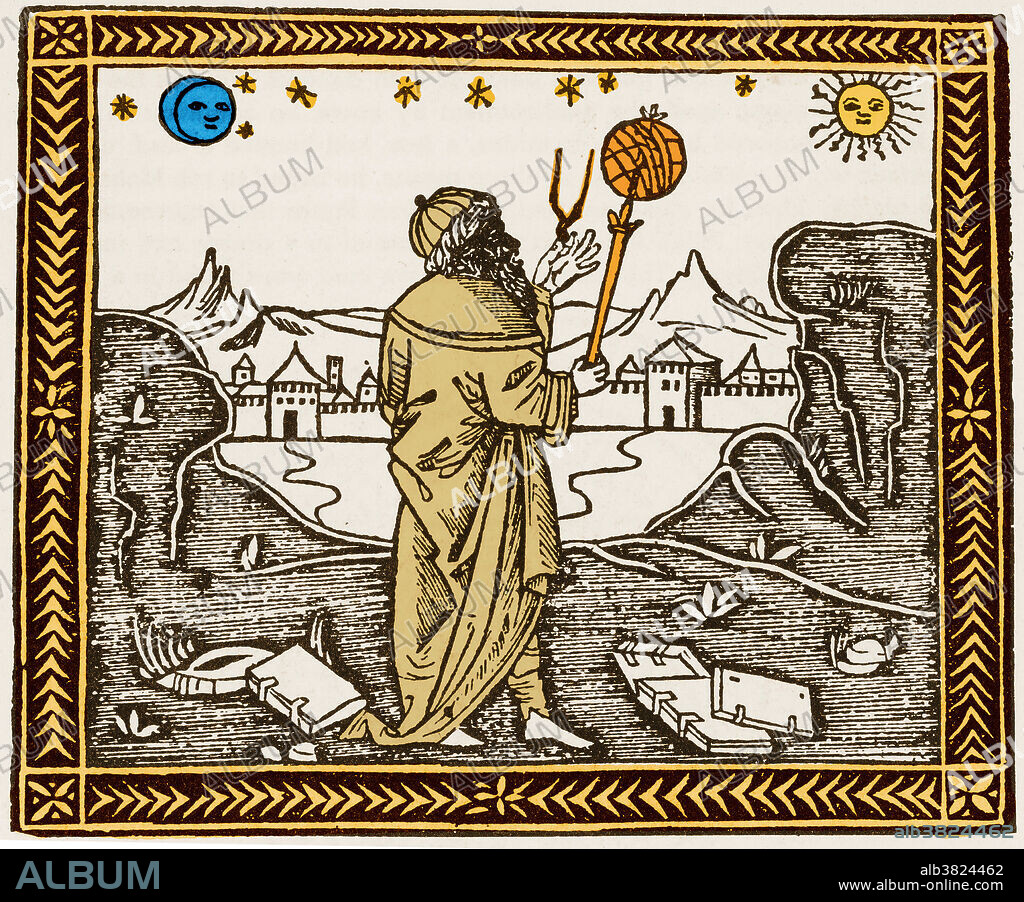alb3824462
Albumasar, Persian Astrologer Astronomer

|
Zu einem anderen Lightbox hinzufügen |
|
Zu einem anderen Lightbox hinzufügen |



Haben Sie bereits ein Konto? Anmelden
Sie haben kein Konto? Registrieren
Dieses Bild kaufen.
Nutzung auswählen:

Titel:
Albumasar, Persian Astrologer Astronomer
Untertitel:
Siehe automatische Übersetzung
From Albumasar's Introductorium in Astronomism. Venice, 1513. European learning changed when the Arabs entered Spain. Endowed with an insatiable curiosity concerning foreign learning, guided by an Oriental imagination, and filled with energy of people who had extended their boundaries from the Indus to the Pyrenees, the Arabs in their writings show a dynamism which sharply contrasts with the passive wisdom of their western counterparts. Albumasar himself was a ninth century Arabic astronomer whose analysis of the heavens resulted in the creation theory based on the alignment of the seven known planets. Abu Ma'shar, Ja'far ibn Muhammad al-Balkhi (August 10, 787 -March 9, 886) was a Persian astrologer, astronomer, and Islamic philosopher, thought to be the greatest astrologer of the Abbasid court in Baghdad. He was not a major innovator and as an astrologer he was not intellectually rigorous. Nevertheless, he wrote a number of practical manuals on
Bildnachweis:
Album / Science Source / New York Public Library
Freigaben (Releases):
Model: Nein - Eigentum: Nein
Rechtefragen?
Rechtefragen?
Bildgröße:
3581 x 2970 px | 30.4 MB
Druckgröße:
30.3 x 25.1 cm | 11.9 x 9.9 in (300 dpi)
Schlüsselwörter:
16. JAHRHUNDERT • 16. JH. • 8. JAHRHUNDERT • 8. JH. • 9. JAHRHUNDERT • 9. JH. • ARABISCH • ASTROLOGE • ASTROLOGIE • ASTRONOMIE • BERÜHMT • BERÜHMTE PERSÖNLICHKEIT • BLOCK-DRUCK • GASTSTÄTTE • HOLZARBEIT: SCHNITZEREI • ILLUSTRATION • ILLUSTRATIONS • ISLAMISCH • MANN • NOTABEL • PERSON • PERSöNLICHKEITEN • PERSÖNLICHKEITEN • PLANET ALLE • PLANET • PROMINENZ • SCHNITZEREI: HOLZ • TECHNIK: HOLZSCHNITT • WISSENSCH.: ASTRONOMIE
 Pinterest
Pinterest Twitter
Twitter Facebook
Facebook Link kopieren
Link kopieren Email
Email
